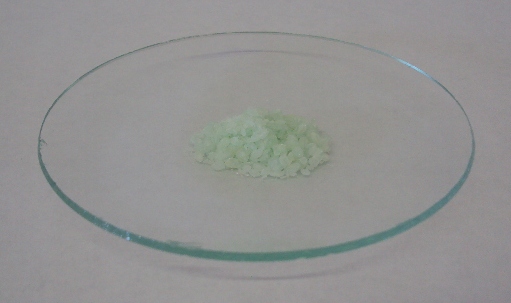Difference Between Complex Salt and Double Salt
The key difference between complex salt and double salt is that complex salt is a chemical component having one or more complex ions, whereas double salt is a chemical component of two salt compounds.
A salt is an ionic chemical compound containing a cation and an anion. The number of cations depends on the number of anions and vice versa. Therefore, the salt compound is neutral.
CONTENTS
1. Overview and Key Difference
2. What is a Complex Salt
3. What is a Double Salt
4. Side by Side Comparison – Complex Salt vs Double Salt in Tabular Form
5. Summary
What is a Complex Salt?
A complex salt is a chemical compound having a central metal atom with coordination bonds of ligands around it. Coordination complex compound is another name for complex salt. We call this a complex salt derives because of its structure which is complex, and the presence of cations and anions bonded to each other.
This type of salt does not completely dissociate into its ions when added to the water; instead, they remain as complex structures. Therefore, this complex formation is helpful in the chelation of metal ions. During this chelation, the metal ions bind with chemical species named as ligands through coordination bonds, making the metal ion unavailable for any other chemical reaction that takes place in a reaction mixture. This is important in chemical reactions where interferences coming from certain metal ions should be removed.
However, a complex salt cannot be analyzed by dissolving it in water since complex salt does not give simple ions. A complex salt is prepared by mixing two different salts in a stoichiometric ratio. Then the correct amount of ligands will bind with the metal ion.
What is a Double Salt?
A double salt is a chemical compound we can prepare through the combination of two different salt compounds. Therefore, a double salt contains more than one anion and cation. We can prepare a double salt by dissolving the salt compounds in the same liquid, followed by crystallization in a regular pattern.

Figure 01: Ammonium Iron(II) Sulfate is a Double Salt
When dissolved in water, a double salt is dissociated completely into all the ions. An aqueous solution of a double salt is composed of cations and anions, which were in the initial two salt compounds. Therefore, this dissociation produces simple ions in the aqueous solution.
A double salt can easily be analyzed by dissolving it in water due to its complete dissociation in water. However, when preparing a double salt, the components (two salts) should be mixed in an equimolar ratio. In other words, the same amount of moles should be mixed. Otherwise, a uniform, regular lattice cannot be obtained.
Some examples of double salts are alums, Tutton’s salt, potassium sodium tartrate, bromlite, etc. The properties of the double salt crystals are different from the properties of the initial salts used in the preparation of the double salt.
What is the Difference Between Complex Salt and Double Salt?
A complex salt is a chemical compound having a central metal atom with coordination bonds of ligands around it while a double salt is a chemical compound that we can prepare through the combination of two different salt compounds. The key difference between complex salt and double salt is that complex salt is a chemical component having one or more complex ions, whereas a double salt is a chemical component of two salt compounds.
The below infographic shows more differences between complex salt and double salt in tabular form for side by side comparison.

Summary – Complex Salt vs Double Salt
The key difference between complex salt and double salt is that complex salt is a chemical component having one or more complex ions, whereas a double salt is a chemical component of two salt compounds.
Reference:
1. Helmenstine, Anne Marie. “Salt Definition in Chemistry.” ThoughtCo, Aug. 28, 2020, Available here.
Image Courtesy:
1. “Mohrs zout” By Capaccio – Own work (CC BY-SA 3.0) via Commons Wikimedia
ncG1vNJzZmivp6x7pbXFn5yrnZ6YsqOx07CcnqZemLyue8OinZ%2Bdopq7pLGMm5ytr5Wau26vzqanpZ2oYsCiuNNmmKecXZm8tq7LnmSsmZypfA%3D%3D